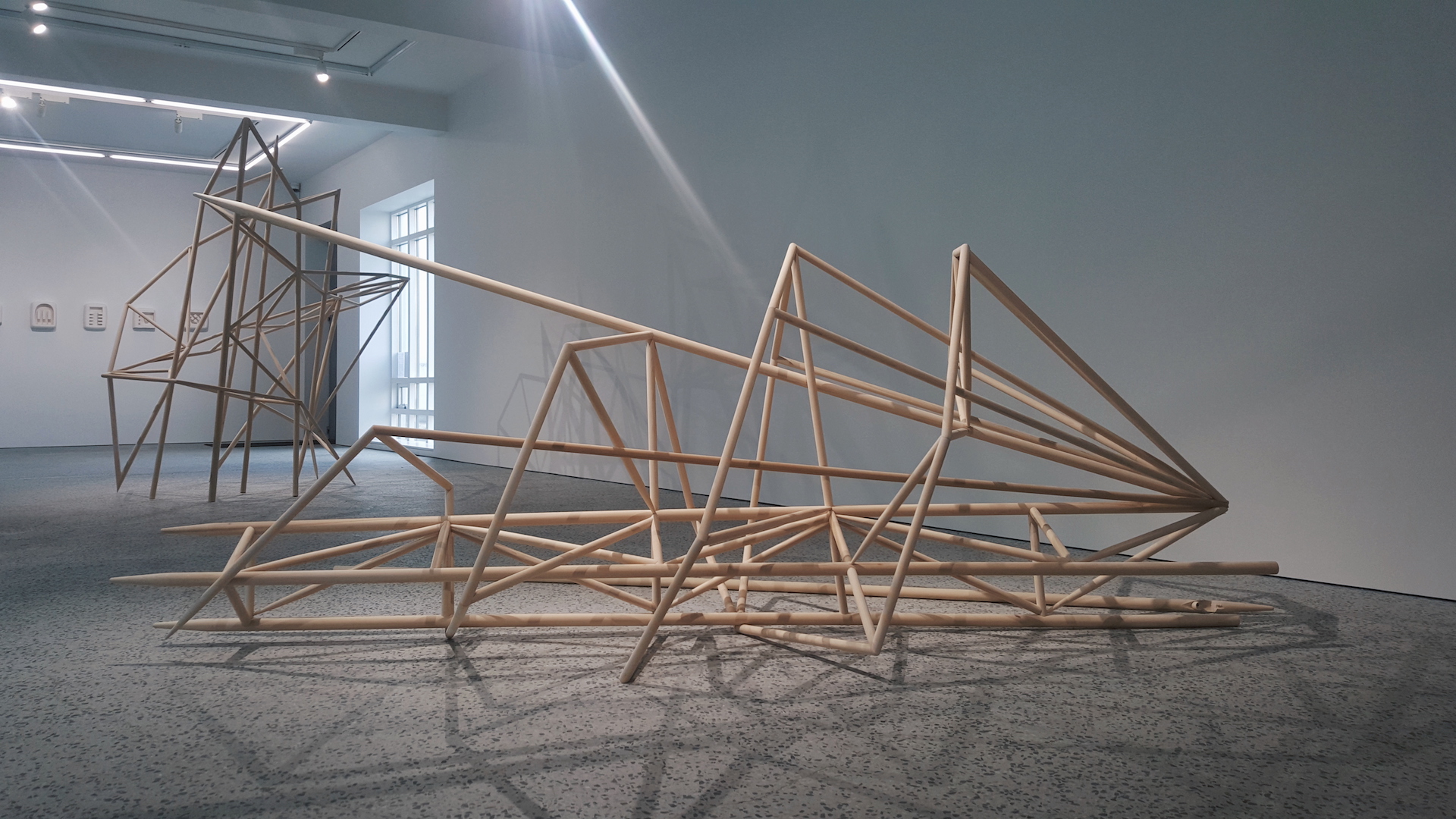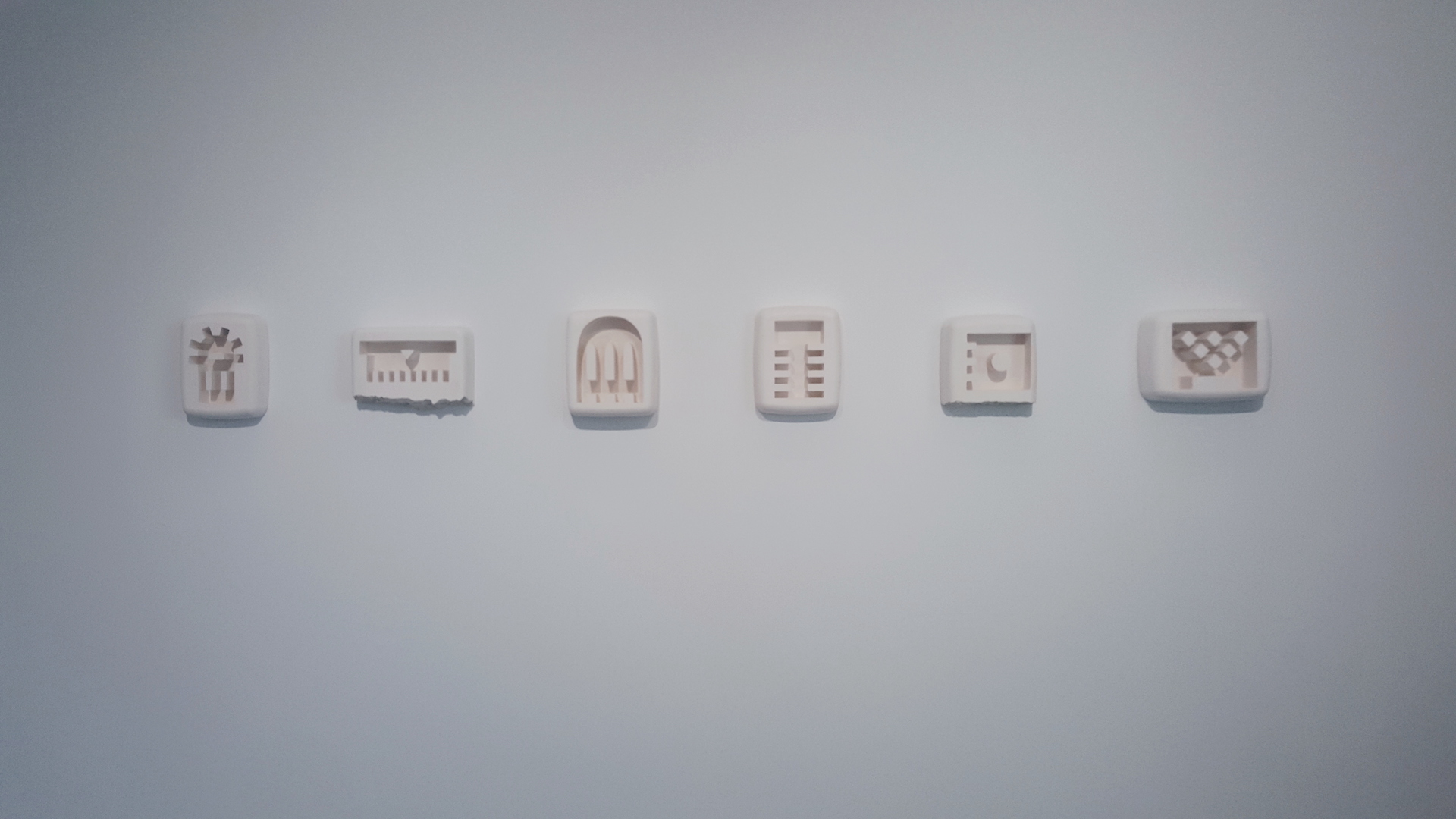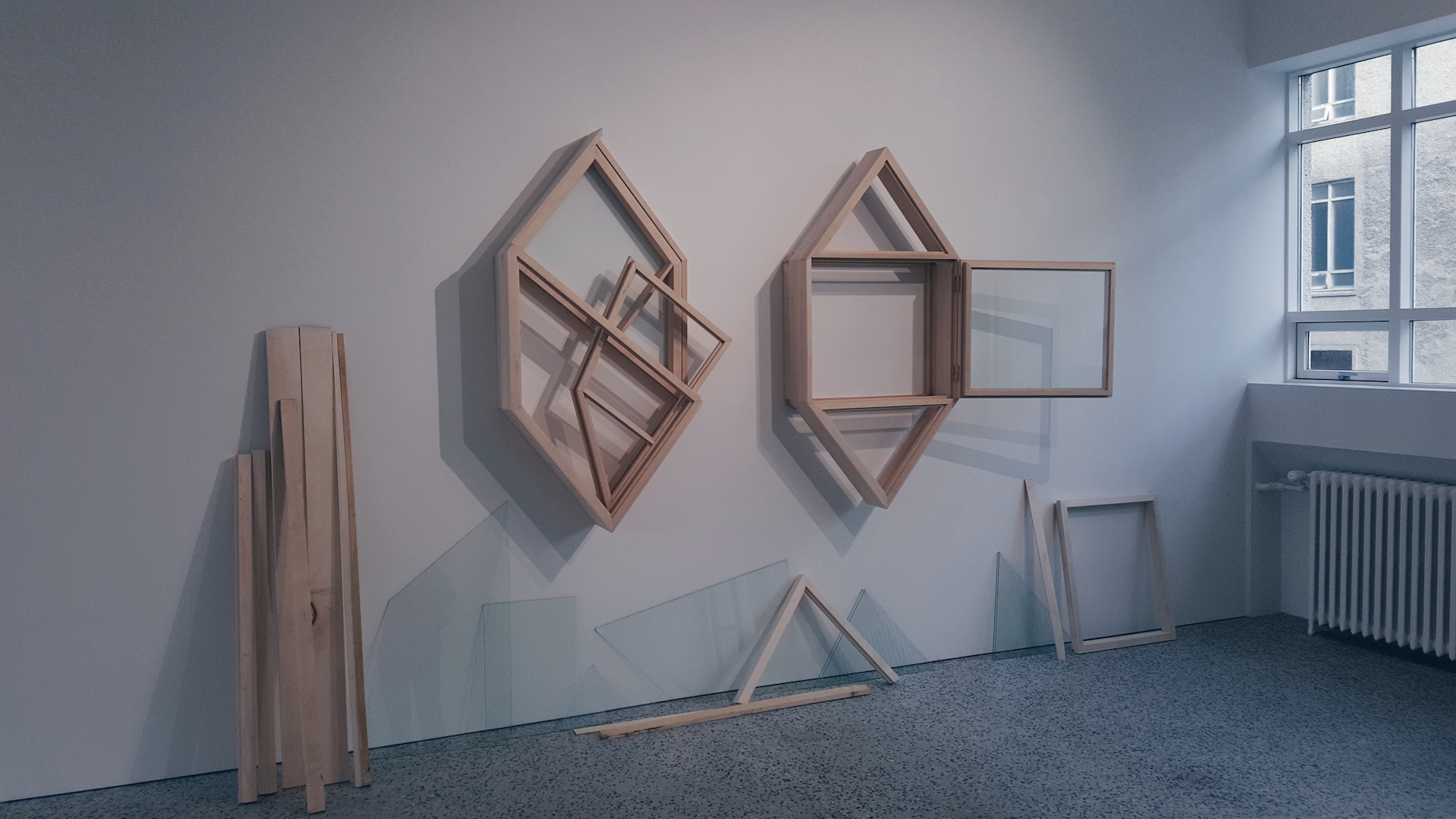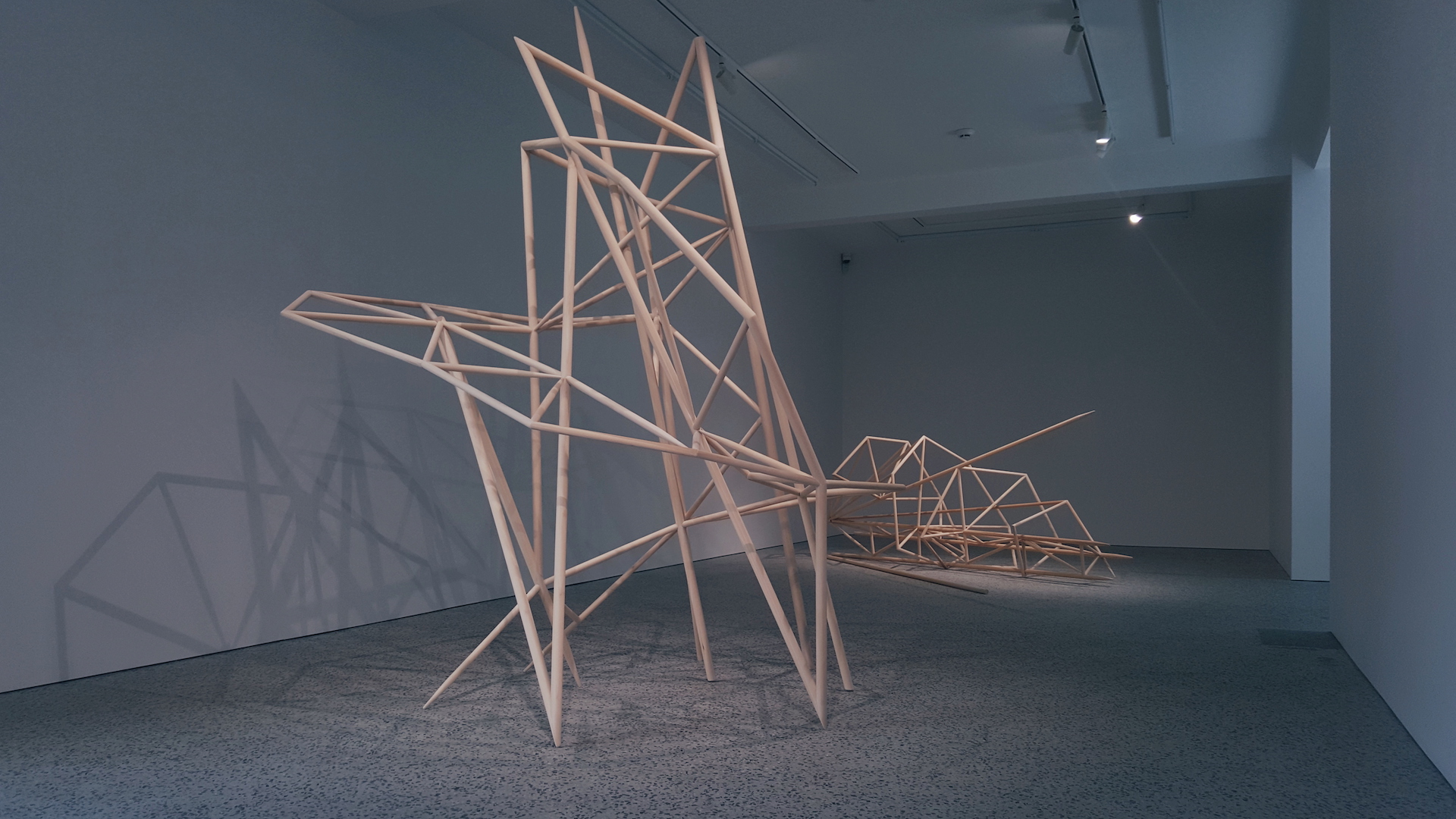
Rósa Gisladóttir’s Mesh of Material and Light
Mediums, or the channels through which cultural practices are transmitted, have been subject of extensive research and re-defining in recent years. Irrespectively, the material world itself often seems absent, or non-relevant. In this exhibition, mediums are rethought in context of the intellectual and physical substance of Matter. Aristotle’s understanding of Matter is that any material object/substance is generated by receiving Form, therefore it becomes Substance. It can be neither independent nor inseparable from its surrounding environment. Τhe other elements that define Matter are Energy and Purpose. Altogether they fabricate actuality and an undeveloped potentiality.
Medium of Matter strikes the visitor as a gathering of forms, studied in relation to their environment: their roots and their footprint on the space. The works exhibited are of two general natures, intermingling together through spatial continuity and the antithesis of light.
In the hall, furthest from the entrance of the gallery space, extended windows allow the natural light to shed onto sculptures made of plaster. Placed on an illuminated plexiglass platform, they lie there resembling a still-life snapshot. The objects cast glowing shadows on the surface transpiring a sensation that they are wafting over it. The lines are clear, the angles sharp yet softened and harmonic. Time and gravity are ever-present. There lies a certain fascination of re-inventing potential everyday-use objects into new forms. Aesthetically, they depict an obvious Greco-Roman influence with a minimalistic twist. A connection can be traced to the artist’s 2012 project Like Water Like Gold (2012, Trajan’s Market, Rome), where large-scale sculptures of a similar nature became an attempt to experiment with ancient forms and modern materials – the element of light always playing a predominant role.

In the rest of the space, wooden, featherweight architectural structures extend through invisible lines towards the skies and the three dimensions, or sole windows – open gates to new ones. The large structures in the centre are slender and transparent, allowing the viewers’ eyes to linger on apparent impalpable forms and to follow on all surrounding surfaces their large, intimidating dark shadows, which multiply their spatial impact. Intense beams of light of artificial source accentuate the delicacy of the material and the frames, that comes into controversy with their constructivist references.
An installation of ancient temple pediment-like molds hung on one wall appears as an anamnesis of classical-period remnants. Which as in the rest of the works, comes perhaps as an attempt to communicate the inborn symbiotic relationship between architecture and sculpture, deriving from material and utility.



Katerína Spathi
Photo credit: Irini Spathi
